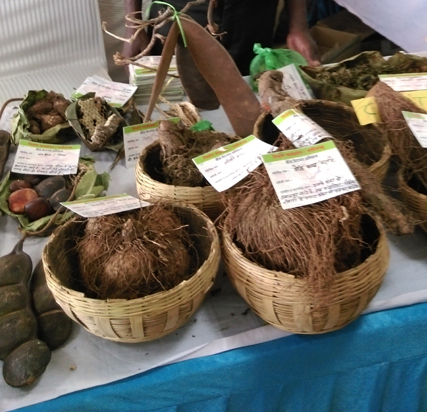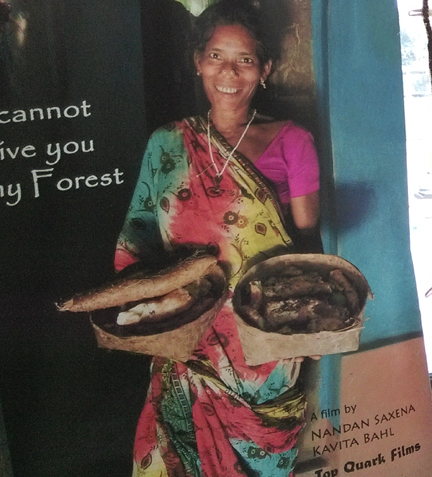Afforestation & Reforestation
-Usha Nair
Martin Luther King, in response to a question as to what he would do in case he dies the following day, declared “Plant a tree”.
What a prophetic and aphorical statement made half a century back! Today it is the considered opinion, that if every individual on earth were to plant two saplings every year for the next 10 years, there may be some hope to arrest global warming. Just
to make up for the loss of trees in the last decade, the world would need to plant trees over an area of 130 million hectares, an area as large as Peru. This would entail planting 14 billion trees every year for 10 consecutive years, i.e. 2 saplings for every
person on Earth (source: UNEP).
World forests cover 30% of the total land area (FAO 2005, UNEP 2007). Forests, which act as sinks for carbon and other greenhouse gases are threatened with elimination. Over the last three decades, almost half of the Earth’s original forest cover has
been deforested. Certain areas such as the Atlantic Rainforest have been diminished to less than 10% of their original size, and the Amazon Rainforest is awaiting the same fate with 600 fires burning daily. Deforestation is contributing almost 20% to the overall
greenhouse gas emissions in the atmosphere, more than the world’s vehicles and aircrafts combined. According to the Intergovernmental Panel on Climate Change, deforestation, mainly in tropical areas, could account for up to one-third of total anthropogenic
carbon dioxide emissions. Humans, by means of deforestation and burning fossil fuels have altered the carbon equilibrium. Destruction of forests create numerous environmental catastrophes, including altering local rainfall patterns, accelerating soil erosion,
causing the flooding of rivers, and threatening millions of species of plants, animals and insects with extinction. The critical task at hand is to decrease the rate of deforestation.

Forest Produce
Reforestation and afforestation are two solutions to combat global warming.
Afforestation is the establishment of forests on lands that have not been forested. Reforestation is the re-establishment of forests in lands where the forests were recently destroyed. It is important to increase carbon sequestration by these means,
since it slows the growth of carbon emissions to the atmosphere.
Forests remove around three billion tons of anthropogenic carbon every year (30% of all carbon dioxide emissions from fossil fuels). Together, they can increase the area of forested land, increase the carbon density of existing forests, and expand the
use of forest products that will sustainably replace fossil-fuel emissions, reduce carbon emissions that are caused from deforestation and degradation. The amount of captured and stored carbon depends on multiple factors like the selection of the site for
afforestation or reforestation, the choice of trees grown, as all species do not grow at the same pace nor do they capture the same amount of carbon. In both processes, the need to use ecosystem- compatible native species is irrefutable; otherwise it may
have negative effects and threaten endemic endangered species of plants and animals.
Afforestation and reforestation are encouraged by the United Nations and the World Bank through direct monetary and other incentives . The Kyoto Protocol provides for the clean development mechanism (CDM), an instrument intended to reduce greenhouse
gas emissions, while assisting developing countries in achieving sustainable development. Countries cap their carbon emission at certain levels and issue permits to industries and firms that grant them right to emit stated amounts of carbon over a period of
time. The firms that can reduce their emissions sell to others that are unable to reduce greenhouse gas by giving monetary value for the cost of polluting air (Capoor and Ambrosi ).
The CDM allows for a small percentage of emission reduction credits to come from afforestation and reforestation (CDM-AR) projects. Carbon trading, sustainable forest management (SFM) and forest certifications are options being adopted by countries for
alleviating deforestation.
Oceania and North and South America had a net loss of forest, while Europe continued to expand, but at a slower rate. Asia, which had a net loss in the 1990s, registered a net gain due to large reforestation by China, which ensured that each citizen between
the ages of 11-60 years planted 3-5 trees per year. Kelly Fella in her2014article, ‘Deforestation and Afforestation, The Value of Forests’ comments that consumers need to be provided with sustainable options such as provision of more recyclable products
and certified wood products with support for brands that embrace zero deforestation.
In September 2014, leaders from governments, major multinationals, indigenous communities and civil society signed the landmark New York Declaration on Forests spelling out ambitious commitments to end deforestation, similar to earlier pledges by the
Consumer Goods Forum, a global alliance of 400 companies with combined sales of three trillion dollars, to achieve net zero deforestation supply chains by 2020. India, which currently ranks in the top three importers of forest risk commodities, after China
and the EU/EFTA countries, in terms of value imported, is the largest importer of palm oil, soya and timber products from tropical forest producer jurisdictions. India, in March 2015, consciously decided for the first time ever, to include forest cover in
its tax allocation formula, by prescribing state government’s portion of tax revenue as partially dependent on how much forestland it has maintained. India has earmarked $6 billion, more than any other nation in the world. The adoption and implementation of
appropriate governance, production and trade policies that favour sustainably produced commodities by all countries is evidently the overriding requirement to ensure a healthy, ecologically balanced environment for future generations.

*
I cannot give you my forest
The worrying questions are: Has the world woken up too late? Has enough been done to reverse global warming? Is it a case of too little too late? Will the haze over S.E.Asia- China, Indonesia-spread? Will more gloomy forecasts follow the recent the MIT
study predicting intolerable temperatures in the Gulf at the turn of the century? What is in store for the human race? Should we have taken more serious note of Martin Luther King’s advice 50 years back?
Usha Nair is a nature lover and can be reached at ushaenvironment@gmail.com
(* I cannot give you my forest is a documentary directed and produced by filmmakers- Nandan Saxena and Kavita Bahl. It has received the National Film Award for Best Environment Film in 2014. "In the city-centric world-view of most planners and administrators,
Forests mean ‘timber’ that can be sold, and minerals that can be mined. They fail to understand the critical importance of the Forest for the food security of the communities that live around the forest.")